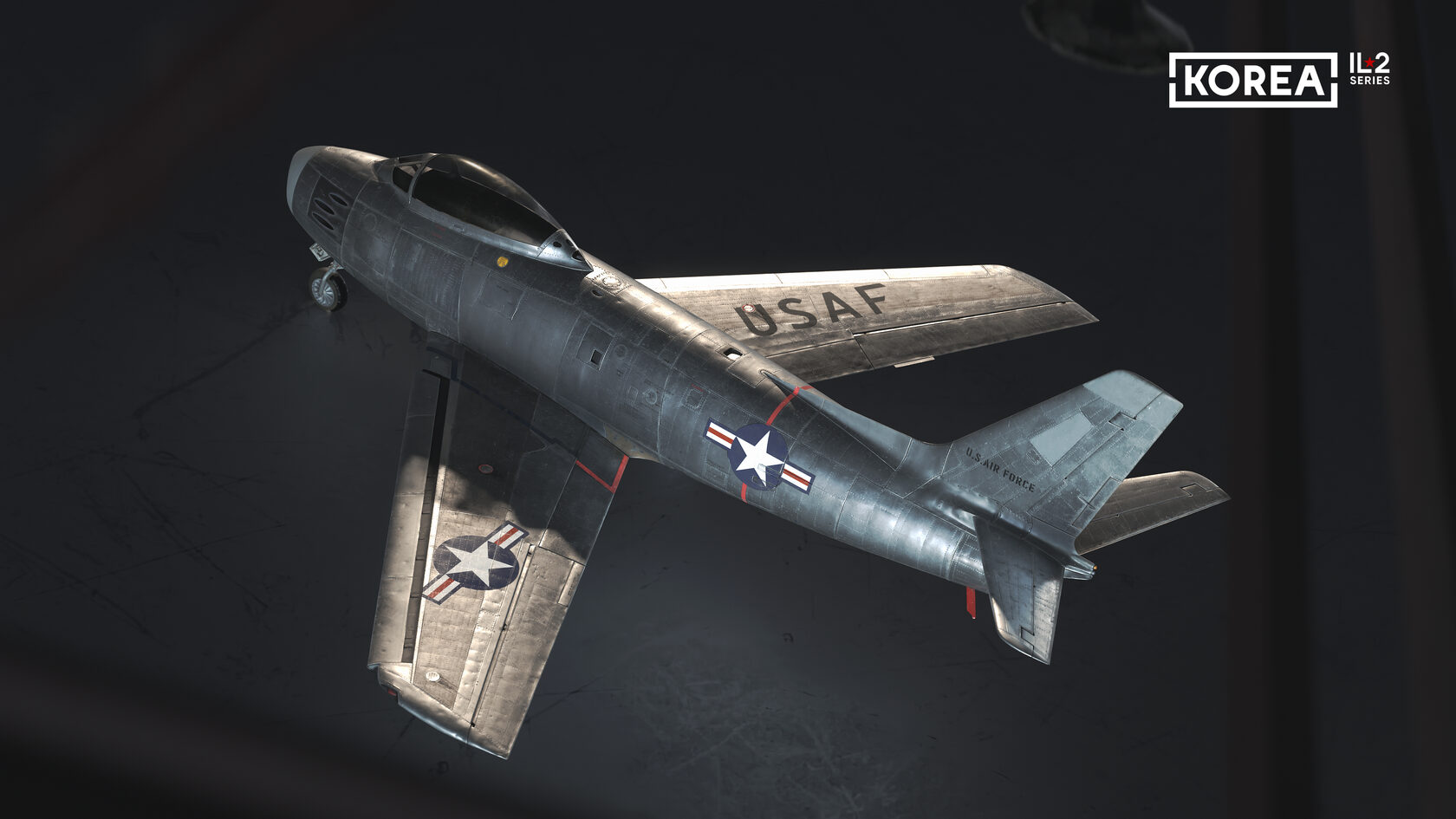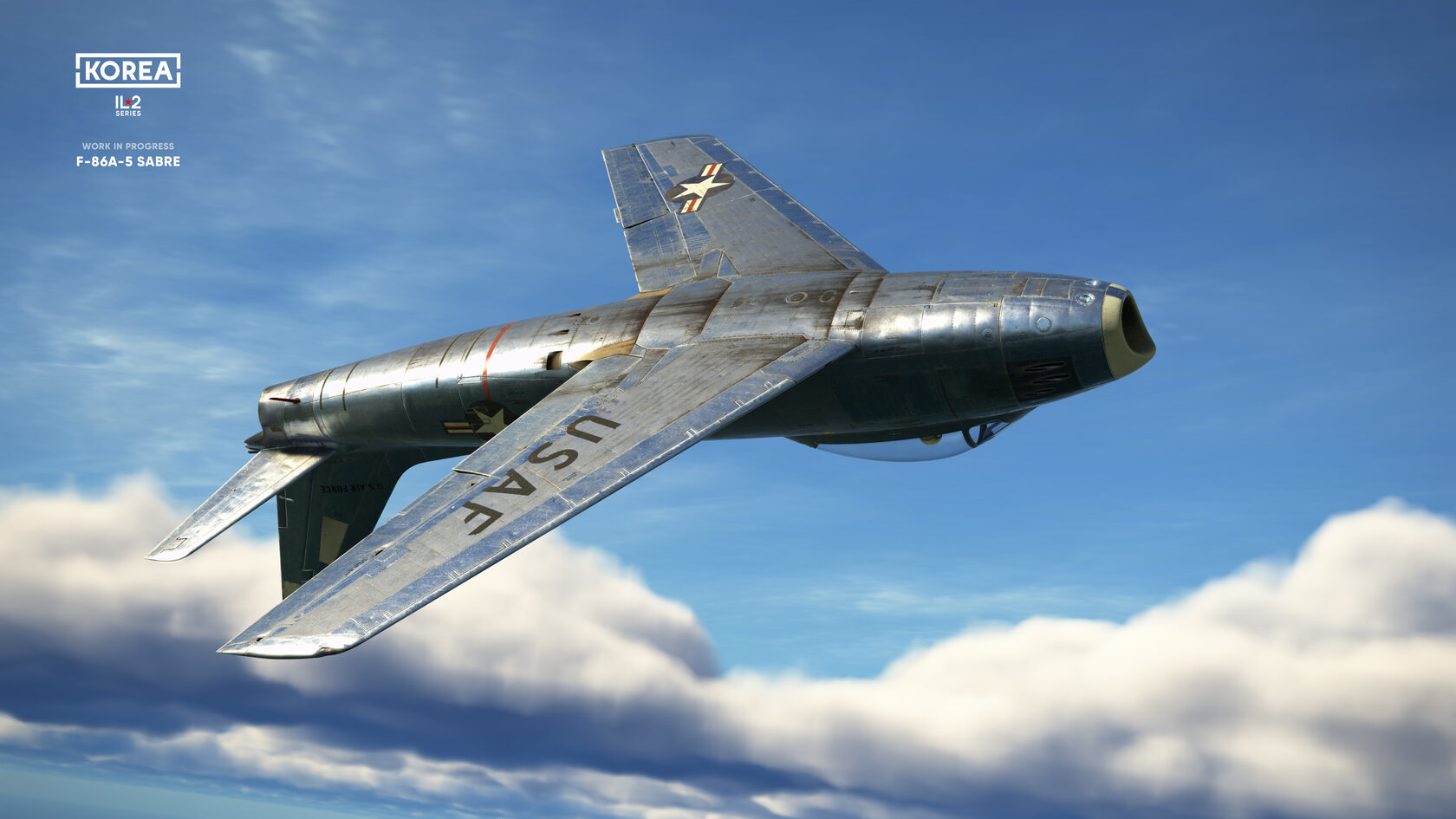Dev Blog #18
Dear Friends,
Today’s Dev Brief is dedicated to one of the two superstars of our new flight simulator: the F-86A Sabre. It was a milestone aircraft — the first American mass-produced fighter with a swept wing — that opened a new transonic speed range for combat aviation.
Today’s Dev Brief is dedicated to one of the two superstars of our new flight simulator: the F-86A Sabre. It was a milestone aircraft — the first American mass-produced fighter with a swept wing — that opened a new transonic speed range for combat aviation.
The story of this machine began in 1944 when a new jet fighter development program was launched, and the first flight took place in 1947. It was originally designed as a straight-winged aircraft, but German data and developments quickly allowed the right decision to be made about the need to switch to a swept wing to reduce the negative effects on controllability when approaching the sound barrier. The swept wing reduced drag at near sonic speeds and helped reduce the dangerous effect of being pulled into a dive (dive tuck).
The first version of the F-86A-1, powered by the J-47 GE-7 engine with an axial compressor, entered service in 1949. Armament consisted of six M3 high-caliber machine guns with a rate of fire of 1200 rounds per minute, bombs with a total weight of up to 2000 pounds, and up to sixteen 5-inch (127 mm) rockets. The aircraft was equipped with an ejection system, and the pilot had portable oxygen equipment that allowed bailing out over the full range of operating speeds and altitudes except near the ground.
An important feature of the aircraft was the large teardrop-shaped canopy, which gave the pilot a very good all-round view. The instruments included a radar range finder, which worked in conjunction with a gyroscopic sight and allowed fine corrections for firing at air targets up to a range of 2000 meters. The aircraft’s mechanics consisted of landing flaps and large airbrakes installed in the rear of the fuselage. The Sabre’s front landing gear strut was steerable, which greatly facilitated control when taxiing on the airfield.
The Korean War saw many modifications of the Sabre, including the F-86A-1 in the early stages, the F-86A-5 during the most intense period of the air war in 1951 (which is why we chose it for our simulator), and the F-86E and F-86F in the later stages. Compared to its main opponent, the MiG-15bis, the Sabre had better horizontal maneuverability and speed at lower altitudes, while the MiG had a better climb rate at all altitudes. This led to the fact that the Red pilots in the air battles over Korea more often used Boom & Zoom tactics, entering the fight above the enemy formation and after an attack immediately escaping return fire upwards, using the strength of their aircraft and ideally not getting tied up in a dogfight. The Sabre’s armament was more focused on the fight against maneuverable targets: the total rate of fire of its machine guns exceeded 7000 rounds per minute, and the ammunition reserve was up to 300 rounds per gun, which allowed the active use of barrage firing tactics. The MiG-15, with its much slower-firing cannon armament and a very small ammunition reserve due to the size of each round, did not have such opportunities. However, thanks to its high-caliber cannon and the high rate of climb and speed at altitude, the MiG was much more effective at its main task — intercepting enemy heavy bombers.
As a result, as you can see, it is quite difficult to say with certainty which of the two aircraft was more effective — MiG-15bis or F-86A-5, because both of them were better in some way. The battles in the virtual skies of the "Korea. IL2 Series" simulator will be unpredictable and interesting!
















